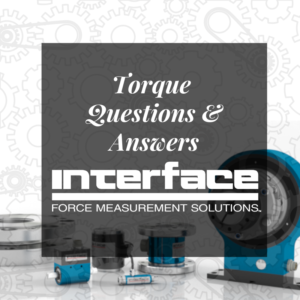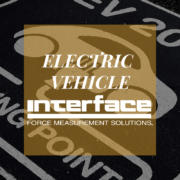Torque Frequently Asked Questions
 Torque is an incredibly important factor to understand and measure when designing products in the automotive, aerospace and defense, industrial, and even the medical sector in some cases. In order to arm our customers with critical information on torque and torque measurement, we created a Q&A of frequently asked questions from our resident experts and contributor to this post, Keith Skidmore.
Torque is an incredibly important factor to understand and measure when designing products in the automotive, aerospace and defense, industrial, and even the medical sector in some cases. In order to arm our customers with critical information on torque and torque measurement, we created a Q&A of frequently asked questions from our resident experts and contributor to this post, Keith Skidmore.
How can you tell the direction of rotation from the output voltage?
The output of a torque sensor is most often bi-polar, which means the output reverses polarity as you cross through zero in your measurement. This has nothing to do with the direction of rotation, it only affects the direction of the torque. You cannot tell the direction using the voltage; however, in many cases, torque sensors can have an encoder installed in them in order to assess the direction of rotation.
What contributes to uncertainty for a torque calibration?
Often it is the actual application of the torque. When you are testing and doing comparison calibration, there are a lot of factors that can affect the results. You might think you are controlling for variances, but subtle differences can affect results.
How do you address unknown issues such as “start-up torque” and unknown torque transient spikes?
In general, start-up torque can be minimized by using a “soft start” on a motor and controlling the startup process. If there is a lot of inertia involved, you must be careful as starting up or powering down quickly can damage the torque sensor. Transient spikes would be factors that arise during testing such as compressor cycling or pulses from an engine.
It is most important to remember that torque sensor capacity should be selected so everything falls within a capacity range, and which sometimes means making an educated guess. Torque sensors always have a safe overload range. The overload range should be reserved only for accidental use. In addition, torque sensors have limits on how high they can go in terms of measurement, and that might be a lot less than their safe overload range.
You must size the sensor to measure appropriately. You can make estimates using horsepower, rpm, and some other factors to calculate torque to come up with an average and then you can factor in spikes. Just remember that starting conditions and spikes can be up to 10x running torque, so it’s very important to consider these.
When designing a rotary torque transducer into an application, do you think the pedestal-mount or the general-purpose floating rotary torque transducer is the best approach?
Generally, we would recommend floating-mount installations. The sensor should always be protected by appropriate couplings. On a floating installation, there should be single-flex couplings on each end of the sensor, and on pedestal or foot-mount, there should be double flex couplings at each end. The sensor is never intended to be used as a bearing block. In some applications, such as high rpm or when test setups need to be changed often, a pedestal-mount will make more sense. Additional design elements and considerations must be factored in.
How do you minimize slippage at the mating surfaces for torque cells that measure in both directions?
This is an issue that is not always considered but can be a big deal. It can affect the measurement and damage the hardware. There are really two considerations. First is the effect on measurement and second is damage to the mating surfaces, and they both need to be considered.
Ultimately, it depends on the types of couplings used and the types of sensors. For example, in flange connections, it’s not the bolts themselves that prevent slippage, but the friction between the mating surfaces. Surfaces must be clean and dry, and hardware torqued to spec.
Are there sensors available that can measure both applied load and torque simultaneously?
Yes. Interface calls these types of sensors axial torsion. In most cases they are static or reaction type torque sensors. Typically, they do not rotate or only rotate within a limited range.
Is there any reason to use a load cell over a torque transducer to measure torque?
Yes, there are several reasons. The main one is that a load cell is often less expensive. In some cases, you can get better accuracy (or the same) with a load cell. The downside is mounting considerations. Measuring torque using a load cell can be easy in some cases or in some cases prove difficult or impossible. Some applications will require a torque sensor for accurate measurement.
Is there any protection in case the test torque goes over the expected capacity?
Certain torque sensors have protections built-in, and that would be a mechanical stop that protects them. Those are typically lower capacity reaction style sensors.
Have additional questions regarding torque?
The Interface team is always here to help with all your torque needs! And to end 2019, Interface is offering a special discount to all our valued customers. We are offering a 10% discount on Interface Rotary Torque Transducers and Reaction Torque Transducers. We have multiple models and capacities in stock and ready to ship now. Contact our Application Engineers today and mention the promo code TORQUE2019.
 *Please note that Interface’s AxialTQ Rotary Torque is not part of this promotion. Orders must be placed by December 31, 2019.
*Please note that Interface’s AxialTQ Rotary Torque is not part of this promotion. Orders must be placed by December 31, 2019.
CONTRIBUTOR: Keith Skidmore, Regional Sales Director
Torque Brochure








